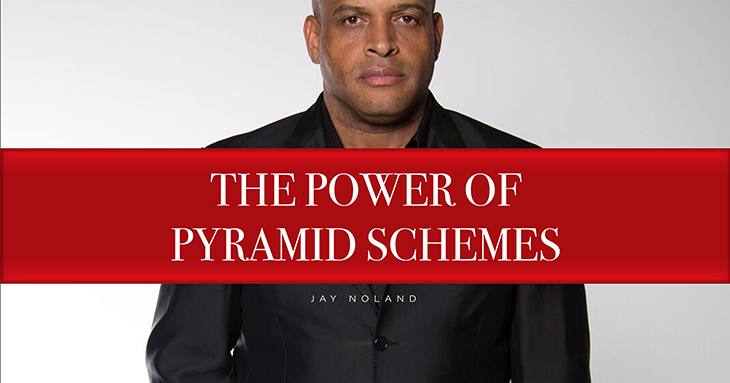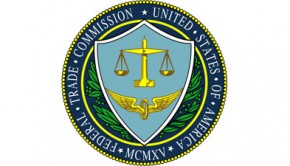
Court Rules that Success by Health Was a Pyramid Scheme
Court also finds that defendants made false and deceptive earnings claims.
More needs to be done to shut down pyramid schemes.
| Bonnie Patten
TINA.org Executive Director Bonnie Patten this week took part in panel discussions on Capitol Hill centered on multi-level marketing companies vs. pyramid schemes. Below is an excerpt of her comments. The panel also included William Keep, a pyramid scheme expert and dean of the business school of The College of New Jersey, and Peter Vander Nat, former senior economist at the FTC.
TINA.org receives a good number of consumer complaints concerning multi-level marketing companies and we have spent a fair amount of time researching current scams within the MLM industry. Our plan today is to explore the issue of pyramid schemes within the MLM industry and ultimately offer a possible solution to more effectively purge the illegal schemes that are hiding within the Multilevel Marketing – a way of distributing products or services in which the distributors earn income from their own retail sales and from retail sales made by their direct and indirect recruits. network. I want to start by framing the issue with three key points.
This is not your grandma’s Tupperware
 Today’s MLMs do not look like the Amways or Tupperwares of yesteryear. In fact, many of these companies no longer even refer to themselves as multi-level marketing companies, preferring instead to rebrand themselves as network marketing companies, affiliate marketing organizations or social networking firms, to name but a few.
Today’s MLMs do not look like the Amways or Tupperwares of yesteryear. In fact, many of these companies no longer even refer to themselves as multi-level marketing companies, preferring instead to rebrand themselves as network marketing companies, affiliate marketing organizations or social networking firms, to name but a few.
In this way these companies are attempting to distance themselves from any perceived link between MLMs and a possible pyramid scheme stigma or comparison to Herbalife. The marketing for today’s MLM is slick, fast, and sexy and there’s a heavy presence on social media – these companies are using the Internet, Twitter, Facebook, and YouTube to their full advantage.
The populations that MLMs are targeting have also evolved over time– with many of the newer companies now targeting teenagers and college students. For example, Vemma (which incidentally rebranded itself from an MLM to an affiliate marketing company just last year) heavily recruits teens, 20-somethings, and college kids, which it refers to as its YPR or Young Peoples Revolution. But there is even younger recruitment.
 Another company TINA.org has been monitoring, called WillaGirl, is currently transitioning from a retail sales company to an MLM business structure and is targeting tweens and teen girls between the ages of 13 and 18 for its would-be distributors. Other groups that are currently being targeted by MLMs include veterans, immigrants, and the economically disadvantaged.
Another company TINA.org has been monitoring, called WillaGirl, is currently transitioning from a retail sales company to an MLM business structure and is targeting tweens and teen girls between the ages of 13 and 18 for its would-be distributors. Other groups that are currently being targeted by MLMs include veterans, immigrants, and the economically disadvantaged.
MLMs today are masters at marketing hope — hope to the hopeless – hope to those most affected by a sluggish economy. MLMs are incredibly good at presenting themselves as “the most lucrative, fun and viable business model there is.”
It’s Complicated
Among the thousands of MLMs, there are wolves hiding in sheep’s clothing –that is to say, pyramid schemes disguising themselves as MLMs. So the issue becomes how do we find the wolves among the sheep and how do we best eradicate these illegal predators without also killing all the sheep?
Given the current state of the law, that’s actually a really tough legal question to answer. While all 50 states have laws against pyramid schemes and there are multiple federal laws and agencies that can prosecute the illegal companies, when you try to figure out whether a company is a legitimate MLM or an illegal pyramid scheme, it’s a very difficult proposition given the law as it currently stands. And for the average consumer, I think it is almost an impossible proposition.
You see, based on current law, in order to figure out if an MLM is really a pyramid scheme, you have to look at how the MLM business operates in practice. Meaning, you need to forget about the celebrity endorsements, ignore the uber smart scientist backing all the terrific products, and pay no attention to the amazing rags-to-riches speeches by distributors. In fact, it doesn’t even really matter what’s in all the legal documents because the key issue is how the MLM business is actually operating out there in the real world.
And that’s a really tough analysis to undertake. We only have to consider the current Herbalife stock market fight in which some pretty smart guys have bet billions on the issue of whether Herbalife is or is not a pyramid scheme to realize that it’s a really hard question to answer. This point is worth repeating — the law on what is and is not a pyramid scheme is murky and that’s a problem.
Fight to the Death
 Let’s assume you’re able to collect the necessary evidence to prove that a pyramid scheme is disguising itself as a legit MLM, the question becomes what can be done. Well, you might say to yourself, that’s an easy question to answer. Simply get rid of it. But you need to keep in mind that when the agency that has taken the lead on this issue — the FTC — points its finger at a company and alleges pyramid scheme, the cases generally go one of two ways: Either a fairly quick settlement and the disappearance of the company or a long, painful fight to the death.
Let’s assume you’re able to collect the necessary evidence to prove that a pyramid scheme is disguising itself as a legit MLM, the question becomes what can be done. Well, you might say to yourself, that’s an easy question to answer. Simply get rid of it. But you need to keep in mind that when the agency that has taken the lead on this issue — the FTC — points its finger at a company and alleges pyramid scheme, the cases generally go one of two ways: Either a fairly quick settlement and the disappearance of the company or a long, painful fight to the death.
This is so because pyramid schemes cannot be fixed. The bad parts cannot be excised from the rest of the organization.
The only remedy for an illegal pyramid scheme is the complete and irreversible destruction of the company. As a result, in those cases where the company does not immediately lie down and die, such accusations of wrongdoing inevitably lead to a long, protracted legal battle that consumes an obscene amount of money and a multitude of man hours. Think of it as a capital murder case against an MLM in which the FTC is seeking the death penalty.
The Amway decision
Let’s take the Amway case by way of example. It was one of the FTC’s earliest actions against an MLM. After investigating Amway, which surely took many months, the FTC brought a five-count complaint against it in 1975 alleging, among other things, that it was a pyramid scheme.
Two years later, after extensive discovery, the case was heard by an administration law judge. At the hearing, 150 witnesses testified, there were over 1,000 exhibits, and the trial transcript was almost 7,000 pages long. A final order was not issued in the case until four years after it was initiated – so it wasn’t until 1979 that the court ruled that the Amway Corporation was, in fact, not a pyramid scheme.
Out of the Amway case, came three provisions, which are now generally referred to as the Amway rules (though I generally refer to them – tongue in cheek – as the three CYA provisions) and you’re likely to find them in any MLM distributor agreement. In short order, Amway used these provisions to counter claims that it was operating an illegal pyramid scheme. The rules are as follows:
Small number of cases
 Since the Amway decision 40 years ago, the FTC has brought approximately 26 other complaints alleging that an MLM company was operating a pyramid scheme. Of those cases, the FTC has a record of three trial wins, no losses, and 22 settlements (Vemma pending settlement). That’s a great record, but a really small number of cases. And to exacerbate the problem, in all 21 settlements the MLMs denied any wrong doing and denied being pyramid schemes. Thus, those settlements have no precedential value for future cases.
Since the Amway decision 40 years ago, the FTC has brought approximately 26 other complaints alleging that an MLM company was operating a pyramid scheme. Of those cases, the FTC has a record of three trial wins, no losses, and 22 settlements (Vemma pending settlement). That’s a great record, but a really small number of cases. And to exacerbate the problem, in all 21 settlements the MLMs denied any wrong doing and denied being pyramid schemes. Thus, those settlements have no precedential value for future cases.
The FTC’s most recent trial win was against a company called BurnLounge. If you think that it’s gotten any easier over the past four decades to prosecute these cases you’d be wrong. Again, after what we can assume to be a year or so of investigation, the FTC filed its complaint alleging that BurnLounge was a pyramid scheme in 2007. Over a year later there was a nine-day bench trial.
Two and a half years after that, in July 2011, the court issues a decision finding that BurnLounge was indeed a pyramid scheme. BurnLounge appeals the trial court’s decision to the 9th Circuit and it takes another two years before the 9th Circuit Court of Appeals issues its opinion confirming the findings of the trial court. So that’s seven years of litigation to end a pyramid scheme that was in business for a little over two years.
And here’s what compounds the problem. States are not bringing these type of cases on their own. My best guess is that the time, resources, and expertise necessary to prosecute pyramid schemes given the complex nature of the law is simply cost prohibitive for most Attorney General offices.
And the second problem is that consumer class actions are simply not a viable alternative. First, most MLMs now bind their distributors to arbitration clauses, which prohibit members from bringing or participating in any sort of lawsuits. Second, when class actions are brought, the beneficiaries are more likely to be the MLMs themselves and the attorneys participating in the cases, rather than the consumers, who generally end up with little or no benefit from the case.
So given this backdrop that I’ve just laid out for you, it seems quite clear to me that the system as it currently stands simply isn’t working.
Court also finds that defendants made false and deceptive earnings claims.
A recap of TINA.org pressuring Nerium to #GetReal
Watch for #NeriumTruth social media campaign exposing company’s inappropriate health and income claims.


